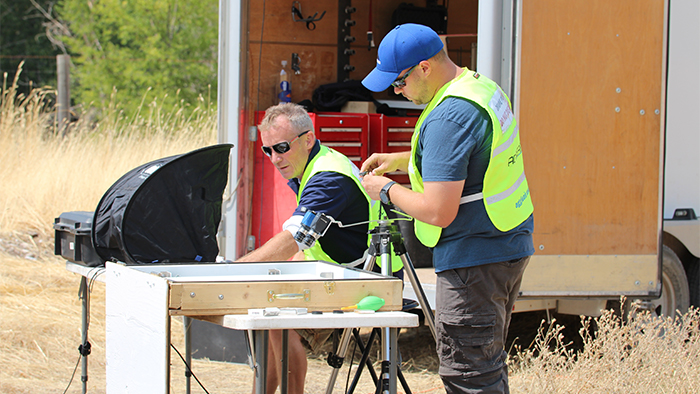Airspace Integration: Safe & Practical

AggieAir has pioneered airspace integration techniques for uncrewed aerial systems (UAS) that are operating above 400 ft (121m) and up to 3,000 ft (914 m) above ground. We utilize manned aircraft radios to communicate with air traffic in a “mini ATC” where the pilot in charge (PIC) ensures the safety of both manned and uncrewed aircraft. AggieAir has also integrated ADS-b into our system allowing for manned aircraft to be aware of the UAS and the ground control operator to see all ADS-b transponding aircraft.
FAA Certificates of Authorization

AggieAir has an unprecedented relationship with FAA, receiving certificates of authorization (COA) for a maximum altitude of 5,000 ft (1524 m) above ground, a maximum altitude of 11,000 ft (3,352 m) above sea level, and 3 COAs within five miles of general aviation airports one of which borders the end of the runway. We employ part 107 pilots for all flights and have a manned pilot who serves as our FAA liaison and Flight Director.
Beyond Line of Sight Operations

AggieAir believes that for UAS to truly become a useful tool for humankind, UAS must be able to fly beyond any operator or observer’s visual line of sight. AggieAir is systematically approaching this problem, engineering solutions for the technical, logistical, and regulatory challenges. Our philosophy is to build on manned aircraft and aerospace standards to engineer UAS that surpass safety standards for instrument rated flights of manned aircraft thus opening the way for beyond line of sight USA operations.
Safety Plan

AggieAir is committed to safety in every aspect of our operations. We’ve developed a safety plan that identifies potential safety risks associated with the safe deployment of the AggieAirTM Uncrewed Aerial Systems (UAS) in the National Airspace System(NAS).This safety plan will be followed for all missions, and any additional safety risks will be identified/discussed for all out-of-state flight missions prior to departure.

